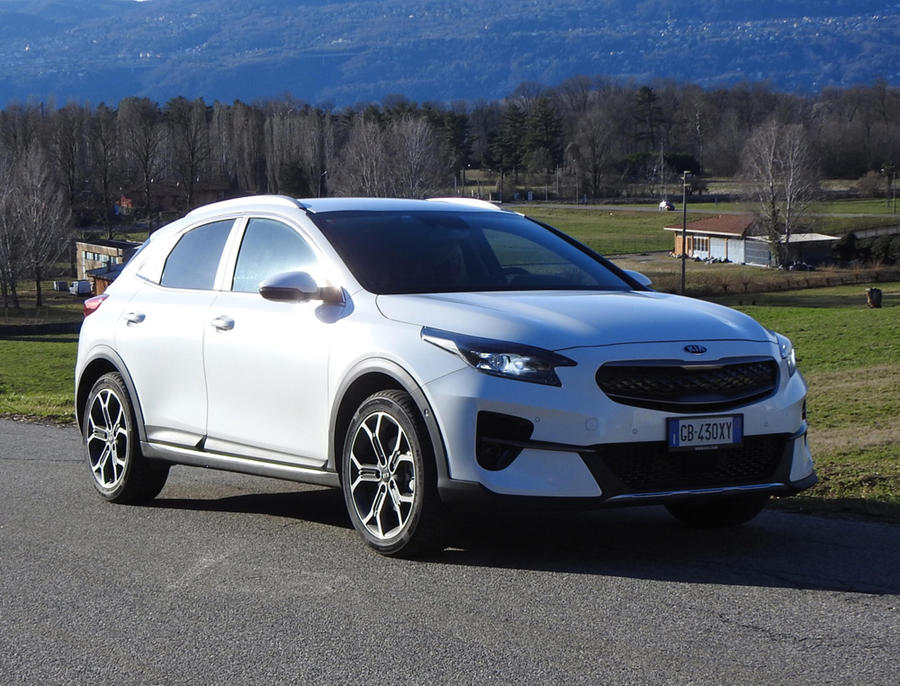The 'heart' of the Kia range for the 'heart' of the market, that C SUV segment that continues to expand, both due to increased demand and enriched offer.
The debut of the plug-in hybrid variant of XCeed adds interest and value to this model, born in Europe and built in Europe (in the ultra-modern factory in Zilina, Slovakia) 'tailored' to the needs of continental customers, including Italians.
This electrified version offers all the advantages of the PHEV system both in terms of homologation - and therefore the possibility of circulation, but also of state and local incentives, as well as tax concessions and reductions - and practices, first of all low consumption.
All of course with the Kia uniqueness of the 7-year warranty.
See the
Kia XCeed Plugin-Hybrid photos
The system chosen by Kia for the XCeed is composed of an 8.9 kWh battery pack and a 44.5 kW electric unit that flanks the 1.6-liter GDI gasoline direct injection engine of the Kappa series to deliver power total of 141 hp with 265 Nm of torque.
Values that - without making this SUV a sports car - allow XCeed to accelerate from 0 to 100 km / h in 11.0 and 10.8 seconds and above all a 100% electric range of 58 well kilometers (NEDC combined cycle ).
The combination of these characteristics translates into homologation values which may appear astonishing but which reaffirm - even if compared to the actual use of the vehicle - the importance of the plug-in hybrid system as long as you keep the battery charged as much as possible. .
Kia XCeed PHEV 1.6 GDI is in fact WLTP approved with a consumption of 1.4 l / 100 km (i.e. 71.4 km per liter of petrol) and with CO2 emissions of 31.9 g / km.
In the XCeed range, this version is therefore the most advantageous from the point of view of operating costs, so much so that the price difference compared to the diesel XCeed, always in the High Tech version - 37,750 against 30,550 euros - absorbs very quickly, especially whether incentives can be used and a management strategy aimed at maximizing the exploitation of the PHEV formula is implemented.
As ANSA Motori verified in the long road test, the energy recovery system, adjustable to three positions, allows the XCeed plug-in hybrid to use kinetic energy and recharge the batteries while coasting or braking, further improving overall efficiency.
The plug-in powertrain is paired with a 6-speed dual-clutch transmission (6DCT) - a solution that is more enjoyable and effective than other hybrid models equipped with continuously variable transmissions.
The dynamic qualities of the chassis and steering were also promoted with flying colors, which have been slightly modified compared to the non-plug-in variants due to the different weight distribution of the PHEV powertrain.
Electronic stability control (ESC) and the VSM (Vehicle Stability Management) system as well as Vector Torque by Braking, which reduces understeer when cornering, are also standard.
Strengthened by the experience that Kia also boasts in the BEV sector, the plug-in hybrid XCeed when moving with battery power alone highlights many 'refinements' that are typical of higher-end models.
This is the case of Kia's Virtual Engine Sound System, an acoustic alarm that activates in electric-only mode at low speed or in reverse.
The system generates virtual sound levels up to 59 dBA to warn pedestrians of the car's presence.
Or the navigator connected to the UVO telematics that help identify the recharging points available in the vicinity or towards the destination.
In addition, the touchscreen can be used to program when the vehicle should be charged when connected to the network.
The air conditioner also offers the 'Driver Only' option (driver only) which deactivates the flow of air to all the air intakes of the passenger compartment, with the exception of those closest to the driver, thus obtaining a reduction in consumption. of energy.
The aesthetic features are also beautiful, such as the 'eco plug-in' badge, the bumpers that reflect the GT-Line style and the 18-inch aluminum alloy wheels.
The flap for the charging socket is integrated into the left front fender, while the cable is stored in the trunk.
At home, recharging is done in 3.9 hours, a time that can go down to 2.4 in public columns.
Also interesting is the ADAS package, which includes adaptive Cruise Control with Stop & Go (SCC), the 2nd level autonomous driving system (LFA), the emergency braking assistance system with car, pedestrian and cyclist recognition (FCA) and the Blind Spot Monitoring System (BCW).

